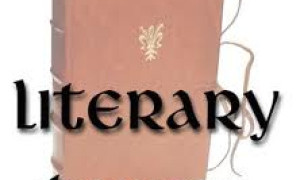 15 Terms
15 TermsHome > Terms > Kazakh (KK) > шығу тегі
шығу тегі
The provenance of a work of art is the history of its ownership. The word comes from the French verb provenir, to come from. Provenance is essential in identifying with certainty the authorship of a work of art. When the chips are down, no amount of connoisseurship can beat a good provenance. The ideal provenance would consist of a history of ownership traceable right back to the artist's studio. Another important aspect of the history of an artwork is the exhibitions it has been in. The importance of provenance has not escaped the attention of forgers. In the 1990s a forger inserted fake references to forged paintings into material such as exhibition catalogues in museum archives. This convinced buyers even when the quality of the forgery was not especially good. The works illustrated each have an interesting provenance. The Hone was discovered in Brazil; the Malevich was sold off by the Soviet government; the Martin is one of three panels of a once famous triptych that had been broken up in the 1930s. One panel was then acquired by Tate. The other two disappeared. They were later tracked down and reunited by a private collector and eventually bequeathed to Tate and brought together with the other panel. Please follow links to 'texts' from these works: Hone, Sketch for 'The Conjuror', (Short Text); Malevich, Dynamic Suprematism, (Full Catalogue); Martin, The Last Judgement, (Full Catalogue and Illustrated Companion).
- Vārdšķira: noun
- Sinonīms(-i):
- Blossary:
- Nozare/domēns: Art history
- Category: General art history
- Company: Tate
- Produkts:
- Akronīmi un saīsinājumi:
Citas valodas:
Ko vēlaties pateikt?
Terms in the News
Featured Terms
Майкл Джексон
Dubbed the Kind of Pop, Michael Joseph Jackson (August 29, 1958 – June 25, 2009) was a celebrated American music artist, dancer, and ...
Līdzstrādnieks
Featured blossaries
Browers Terms By Category
- General law(5868)
- Contracts(640)
- Patent & trademark(449)
- Legal(214)
- US law(77)
- European law(75)
Law(7373) Terms
- Contracts(640)
- Home improvement(270)
- Mortgage(171)
- Residential(37)
- Corporate(35)
- Commercial(31)
Real estate(1184) Terms
- Fuel cell(402)
- Capacitors(290)
- Motors(278)
- Generators(192)
- Circuit breakers(147)
- Power supplies(77)
Electrical equipment(1403) Terms
- Automobile(10466)
- Motorcycles(899)
- Automotive paint(373)
- Tires(268)
- Vehicle equipment(180)
- Auto parts(166)



